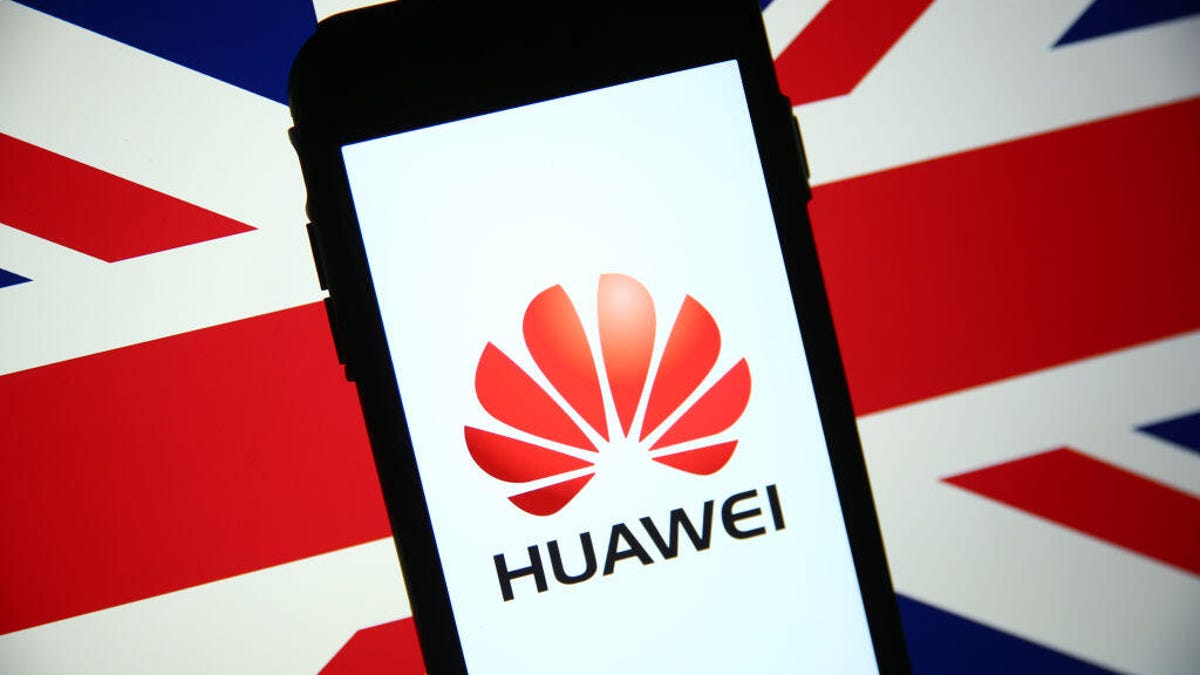UK bans installation of new Huawei gear in 5G networks starting in September
It's all part of the government's plan to rid UK telecommunications infrastructure of equipment made by "high risk" vendors.

Huawei has a long history of working in the UK, but that chapter could be closing.
The UK government has laid out a roadmap for removing all telecommunications equipment made by "high risk" vendors, including Huawei, from the country's 5G network by 2027. As part of its plan to protect infrastructure, UK carriers will no longer be able to install Huawei gear beginning in September 2021, the UK's Department for Digital, Culture, Media and Sport said Monday.
In July, the government announced it was banning Huawei equipment from the UK's 5G network, with a deadline of 2027 for removing it. The decision is a reversal of an announcement made in January, in which the country said Huawei would have its market share capped at 35% and its equipment wouldn't be allowed in core parts of the network.
UK Prime Minister Boris Johnson has come under increased pressure from the US over the past year to follow in its footsteps by banning Huawei outright. But it took the introduction of new US trade sanctions in May that prevented the company from using US technology in its own products for the UK to finally issue a ban of its own.
UK carriers will now need to begin the removal of Huawei equipment from their 5G networks, most of which were launched in 2019. Representatives for Huawei declined to comment on the issue. The company has continued to reiterate that it poses no security threat.
"Today I am setting out a clear path for the complete removal of high risk vendors from our 5G networks," Digital Secretary Oliver Dowden said in a statement. "This will be done through new and unprecedented powers to identify and ban telecoms equipment which poses a threat to our national security."
Alongside the removal of Huawei equipment, the UK is also launching a new 5G Supply Chain Diversification Strategy, which will establish paths to bring new vendors into the market. Ensuring the network has gear made by a broad number of different companies will boost security and also means the country is not just reliant on one or two established players.
To kick off the strategy, the government will invest an initial £250 million ($332 million) in innovation projects, including the establishment of a secure research facility, the National Telecoms Lab. In his statement, Dowden said he hoped the diversification strategy will "make sure we are never again dependent on a handful of telecoms vendors for the smooth and secure running of our networks."
Members of the telecommunications industry, including Vodafone CTO Scott Petty and Hamish MacLeod, director of the trade association for British carriers Mobile UK, welcomed the launch of the strategy.
"This will nurture UK talent, foster innovation and competition and deliver more jobs and investment across the economy," MacLeod said in a statement.
"This strategy and financial commitment from the government is good for the industry, and for smaller UK technology firms that will only grow with the right support," Petty added.

